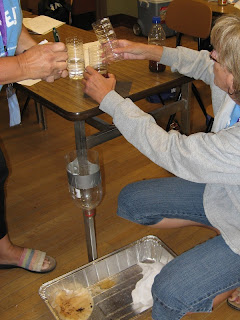After finally getting my hands on some pork belly, I decided to try to make my own bacon, or pancetta to be exact. The main difference is the higher number of seasonings than regular bacon, and a long drying time (about two weeks). The basic procedure for dry curing is to create a salt cure, rub it liberally into the meat, seal it in a ziplock bag and keep cold for about a week.
The cure mix, containing salt, brown sugar, black pepper, juniper, allspice, garlic and thyme.
with a couple of pieces left over, one made a very nice pot roast, the other chopped into cubes and slowly braised in Asian flavours (soy, mirin, oyster sauce, ginger).


The pork and the remaining cure was then placed in a bag and as much air removed. This was refrigerated for seven days in the bottom of the fridge, rubbing and turning the meat every day. A good amount of liquid is extracted from the pork that needs to be kept against the meat.
After seven days in the cure, the bacon is rinsed well then smoked. While this is not in the traditional recipe for pancetta, i love the smoky flavour that 3 hours over apple wood chips would give the bacon.
I used a two compartment smoker in order to keep the temperature down (aiming for more of a cold smoke than a hot smoke). The aim was not to cook the bacon, only to add flavour.
Keeping a small fire also helped keep the temperature low (below 150F).
a nice close up shot...
The final product before drying. We needed to check if it was good...
So we fried up a couple of pieces. Very nice :)





























































